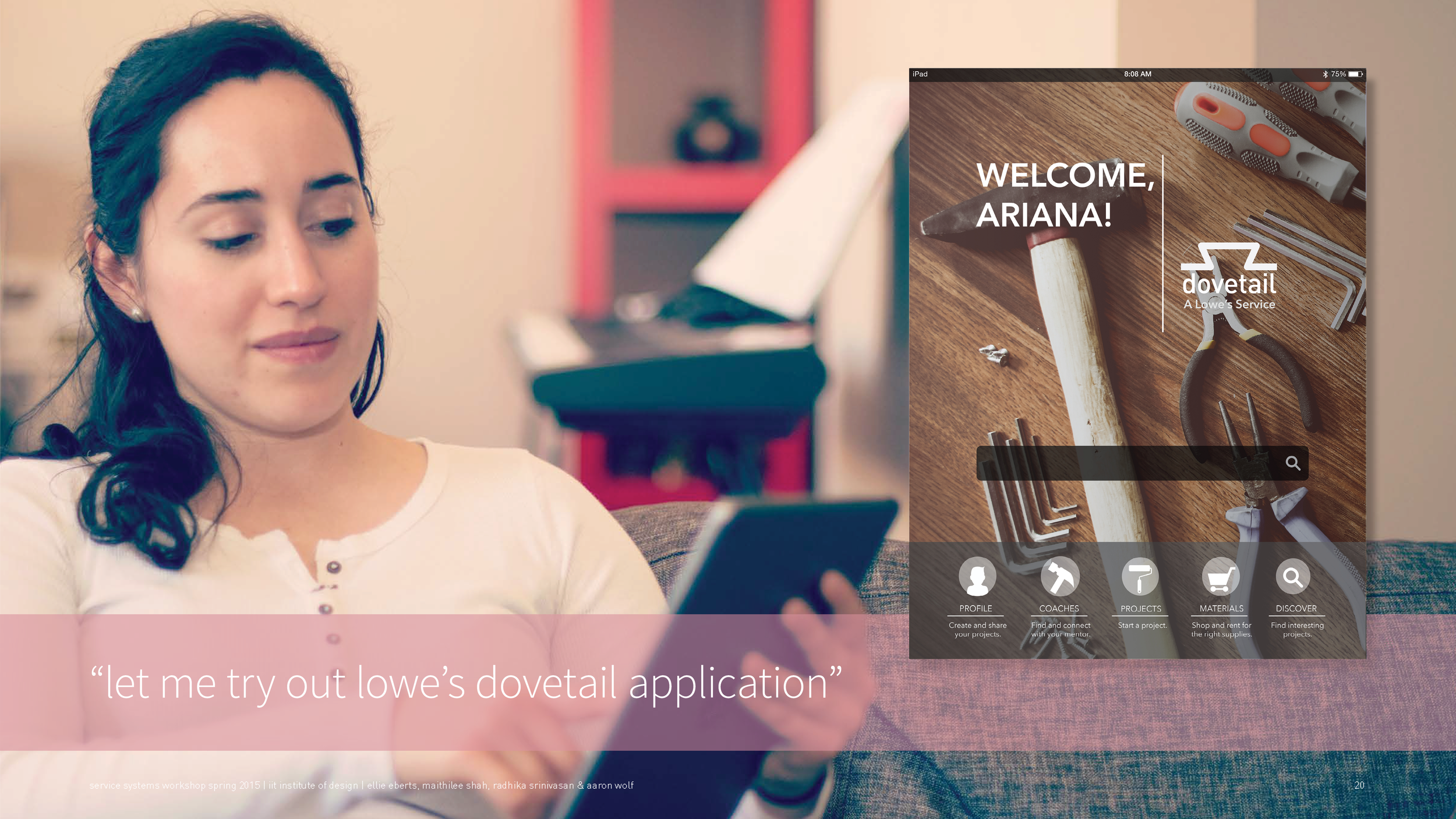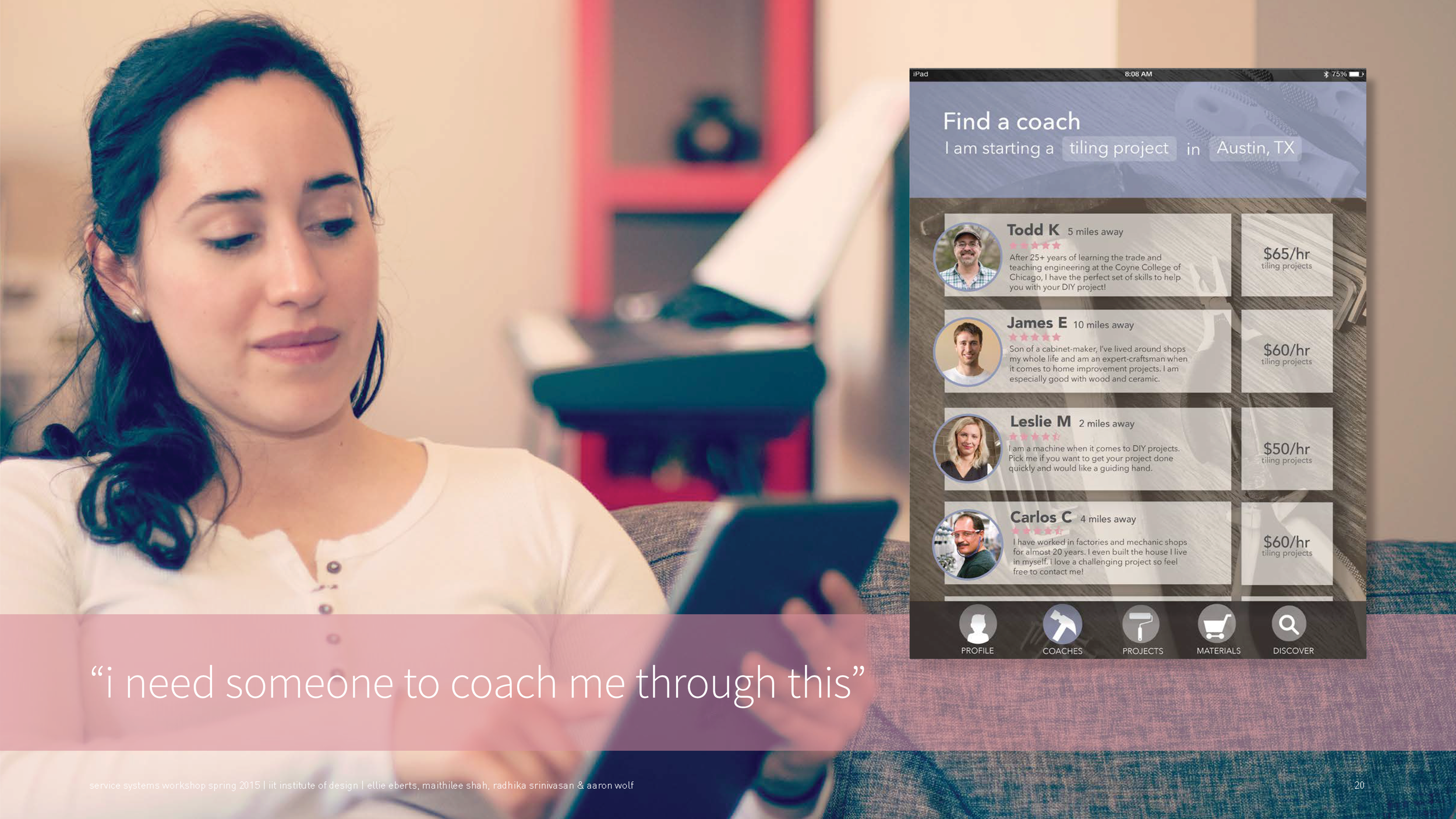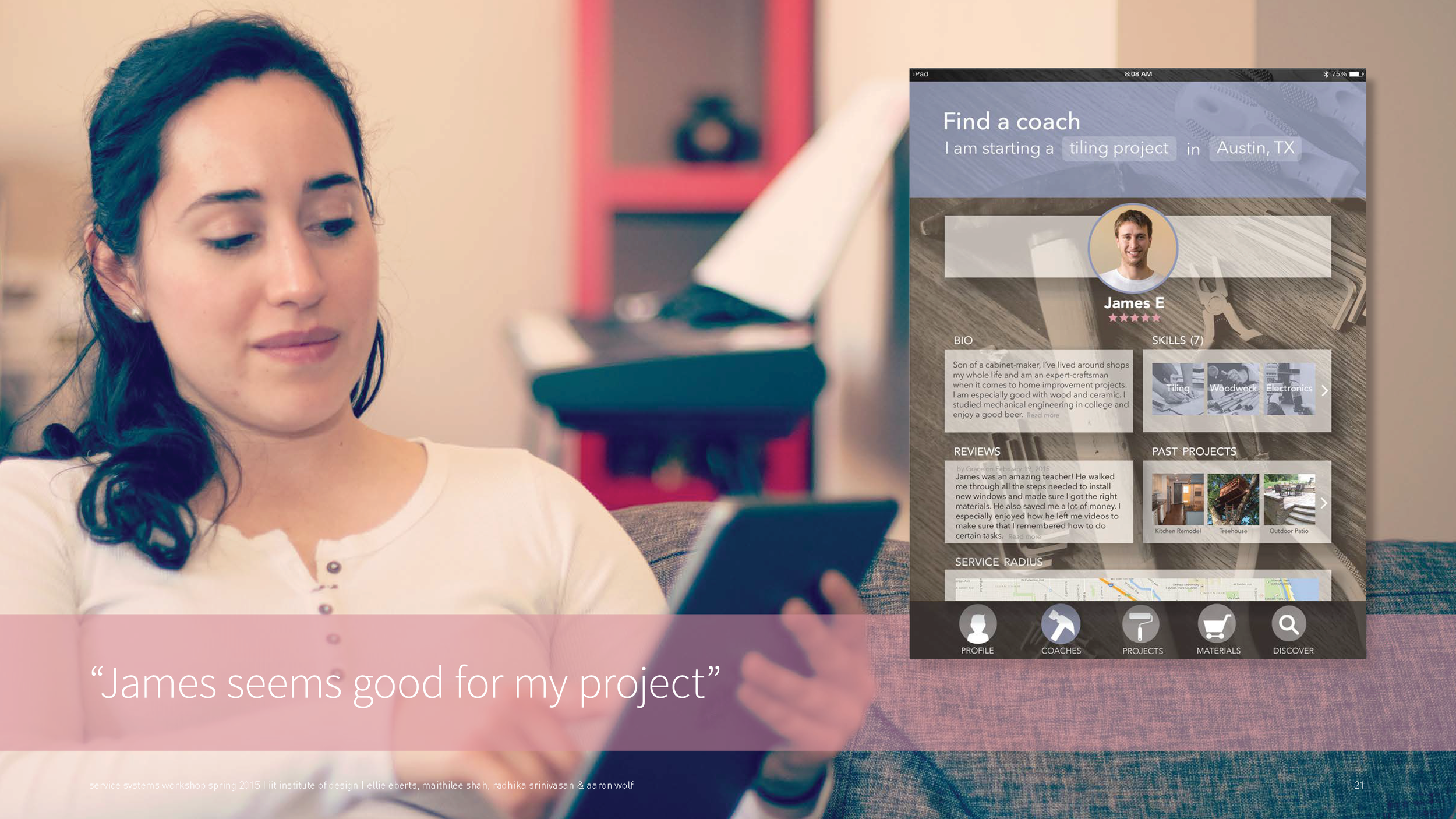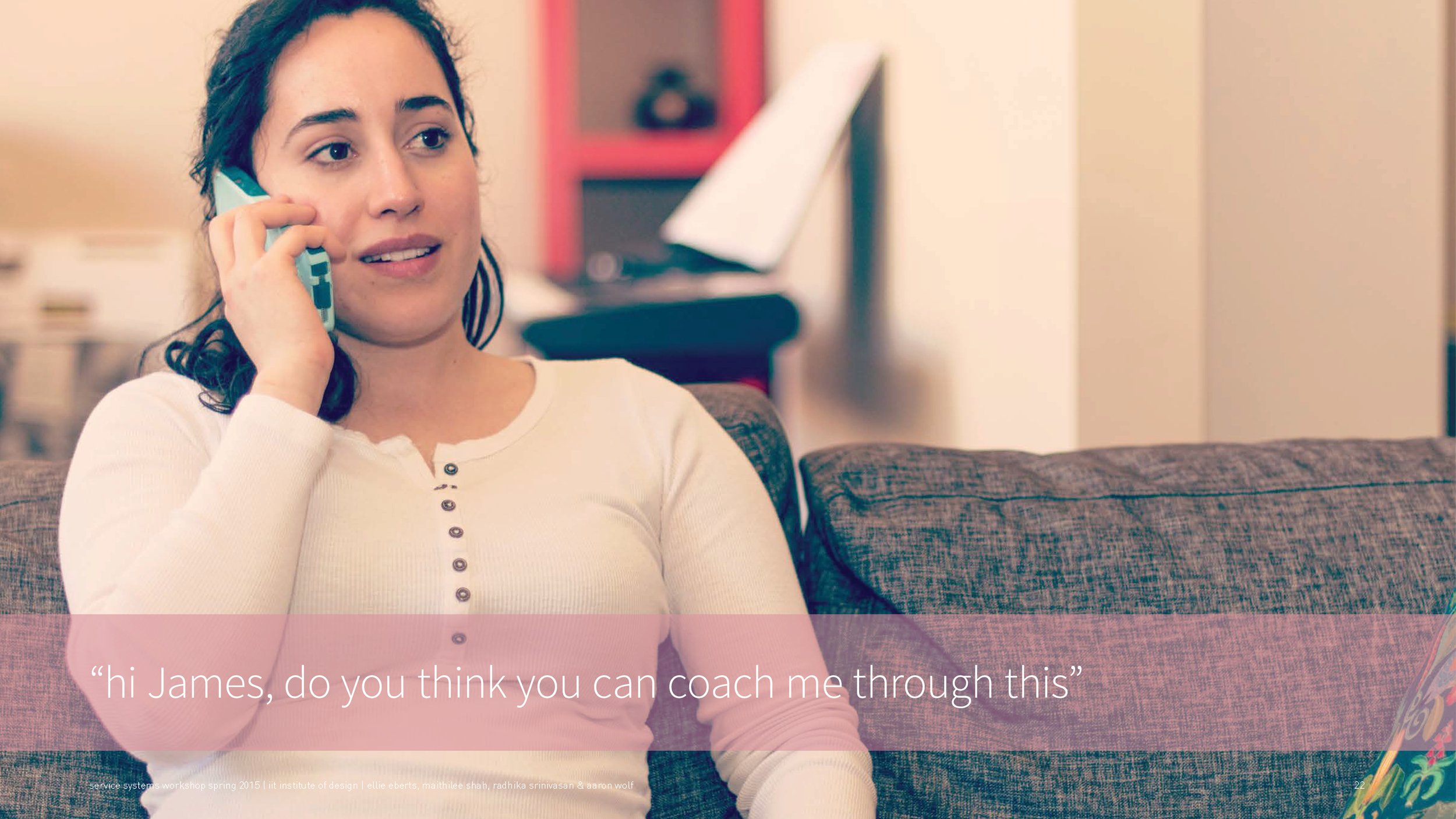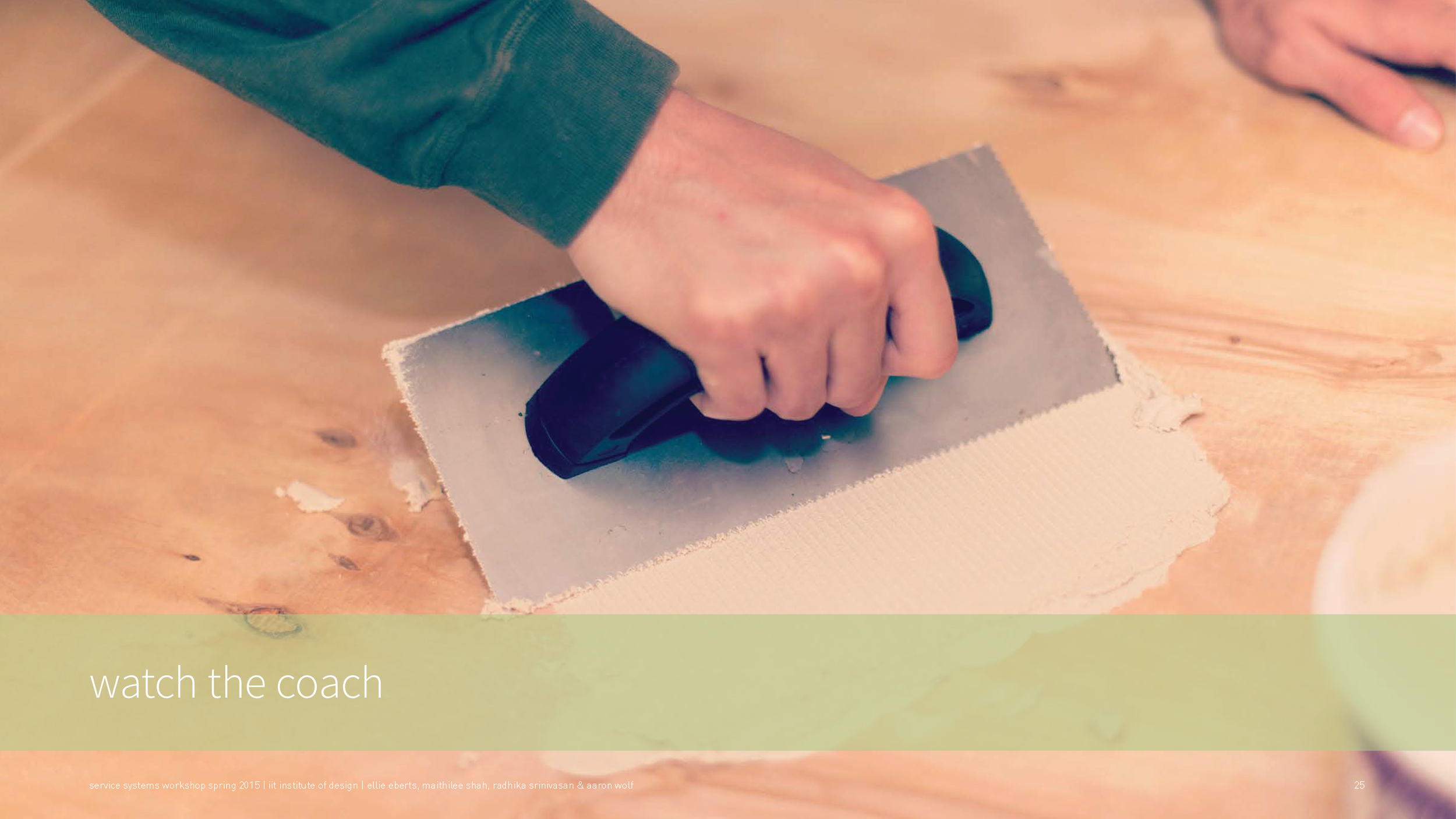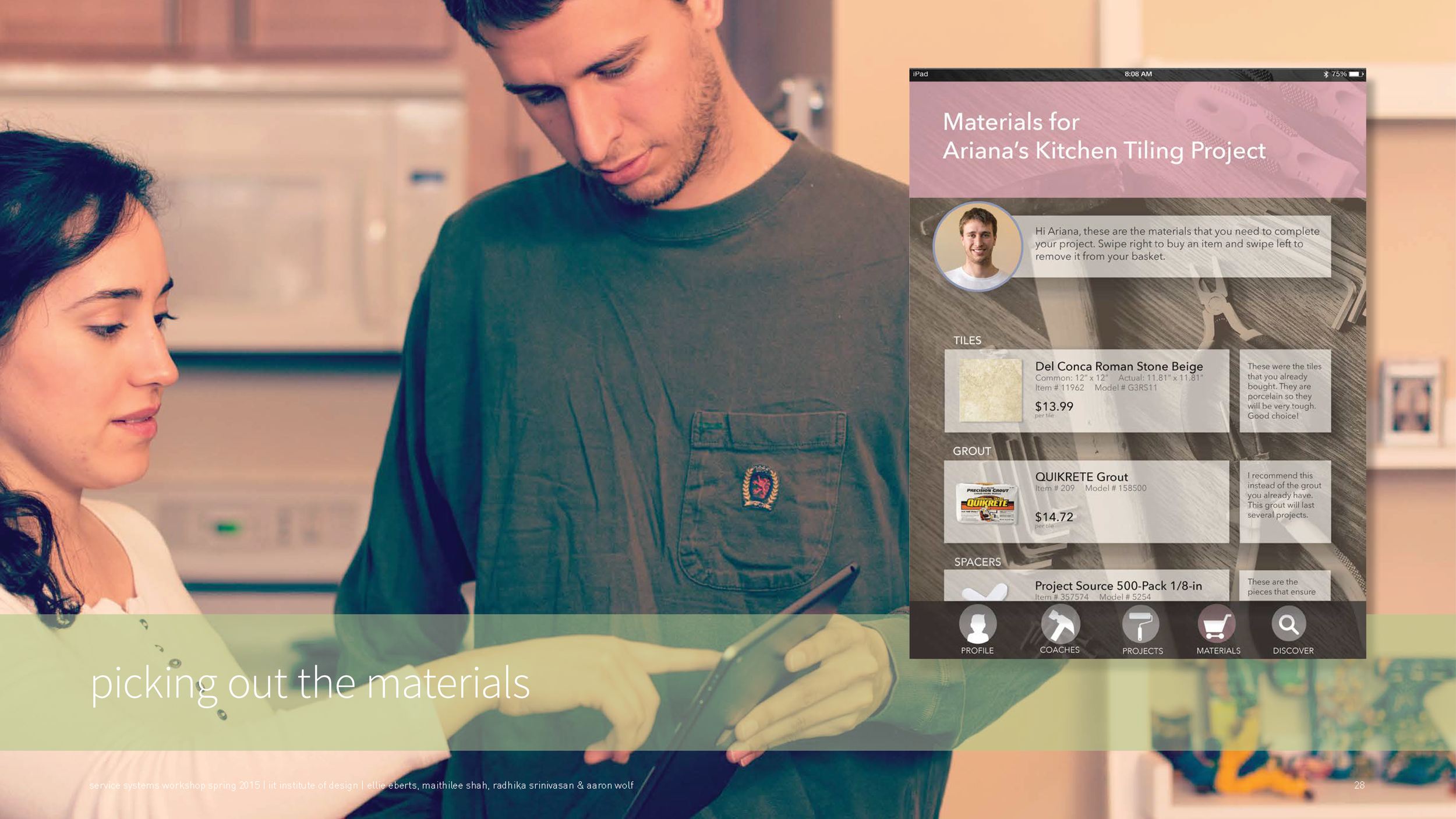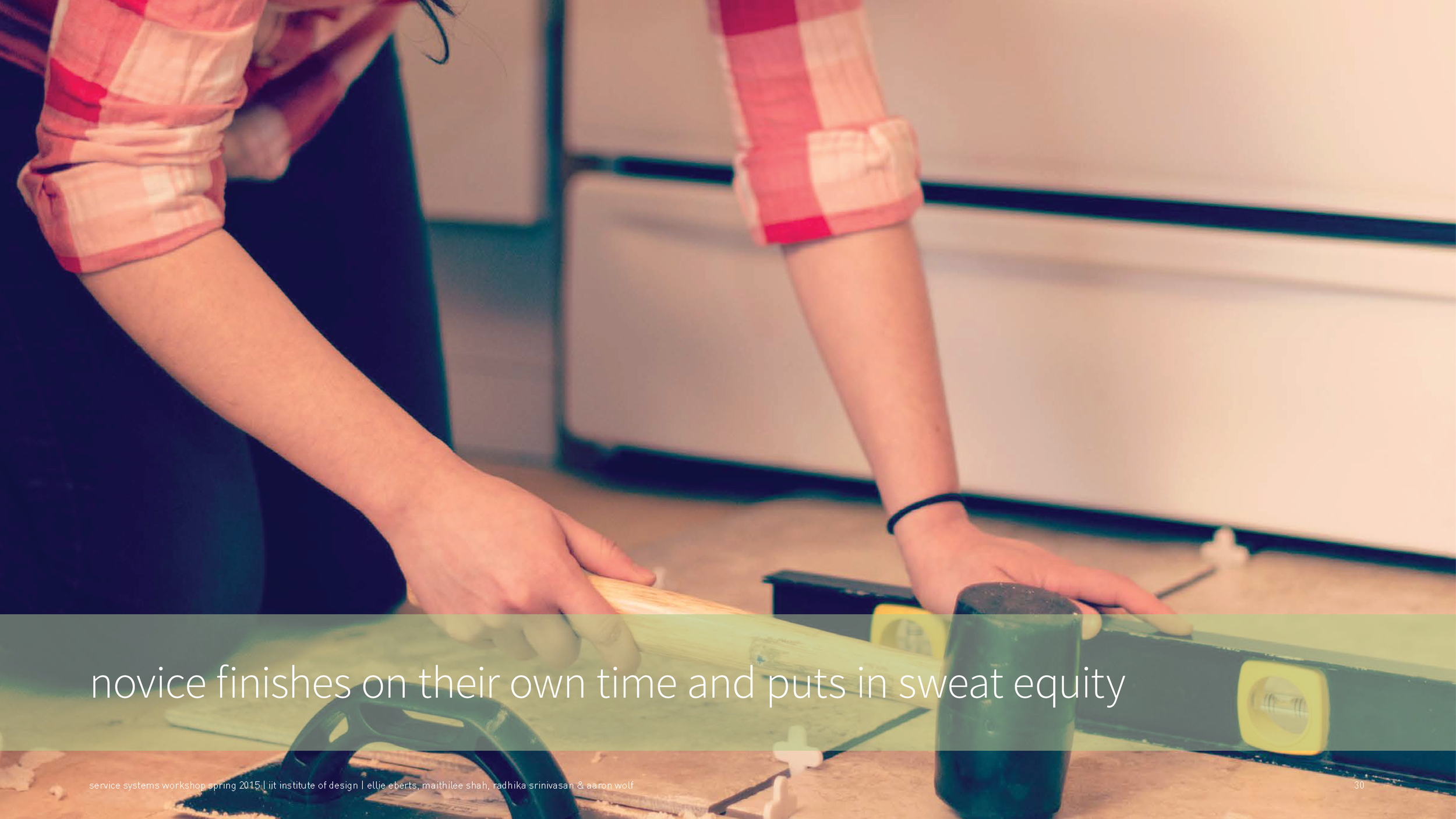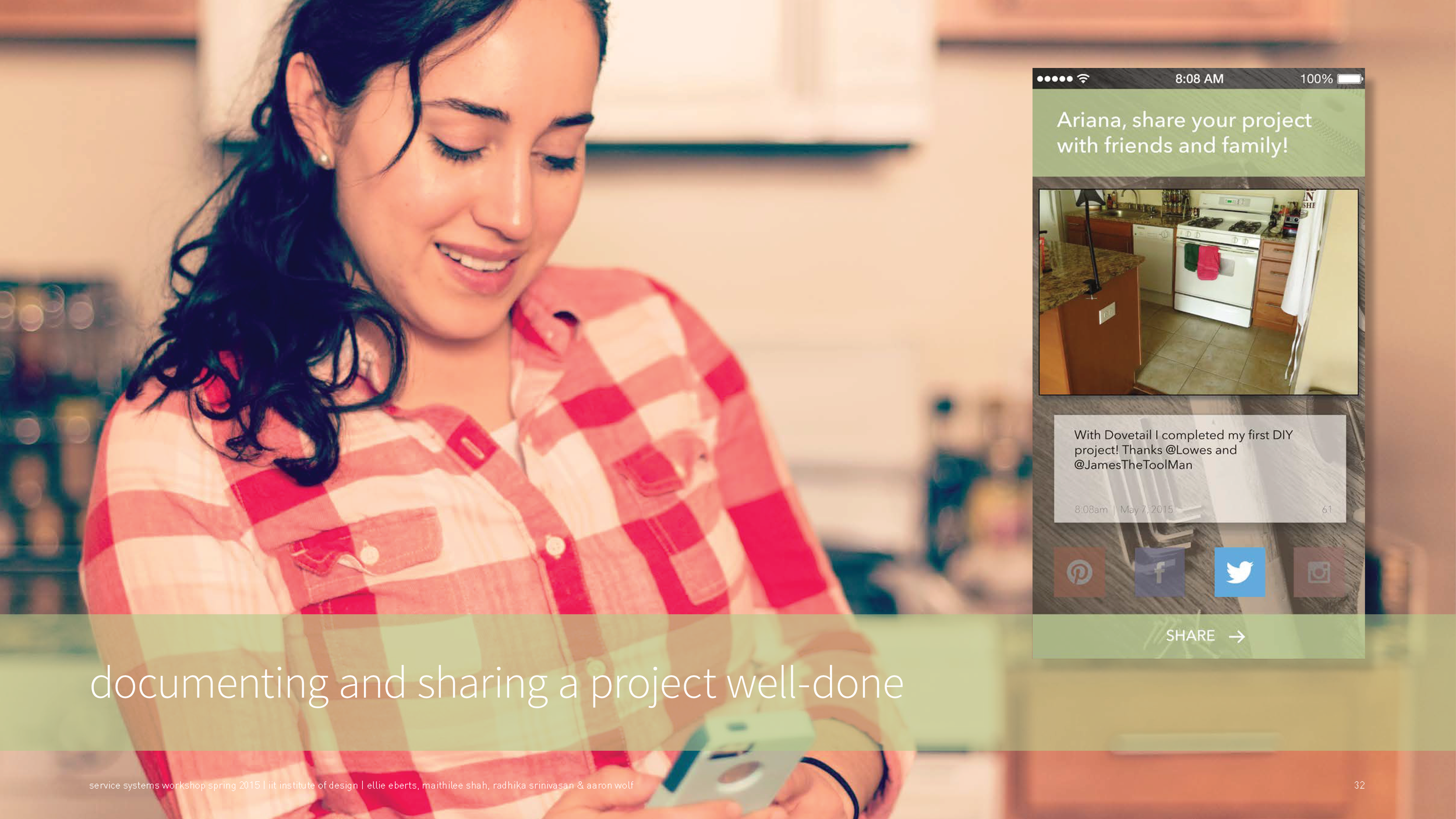Overview
The IKEA Effect is a cognitive bias in which people place a higher value on objects that they made themselves than on similar objects made by others. Simply put, people tend to value the time, effort, skill, and experience that went into making something. Lowe's is a large retail home improvement store which finds itself in the midst of a do-it-yourself resurgence. We set out to design a service for Lowe's that addressed this growing demand for DIY projects.
From our early research, we found that while there was a large amount of people who would love to participate in DIY projects (readily evidenced by the popularity of DIY subreddits, Pinterest pages, and blogs) but these people neither had the skills required to complete a project nor reliable access to experts who could help them with their project. We set out to solve this problem.
Concentration
Research
Service Design
User Experience Design
Team
Aaron Wolf
Radhika Srinivasan
Maithilee Shah
Ellie Eberts
Instructors
April Starr
Dinesh Goburdhun
research
In our research, we began with site visits to Lowe's retail stores, research on blogs and other online material, and interviews. In finding the right people to interview, we mapped out ten attributes and found people who had different combinations of those attributes (so that we could get a better understanding of the DIY space). We found that when people failed (quitting before starting, quitting before finishing, or ending up with a sub-optimal product) people fell into the same sorts of traps.
Each of the problems above contributed to failures in the DIY process. An inexperienced person may try to follow along with a YouTube tutorial but quickly run into problems with not having the right equipment. Many times people will ask a salesperson for help but find that when it comes to actually building, the process is much more difficult than expected (especially when unforeseen problems arise).
analysis
We first mapped out a typical DIY user journey (which we found from our research). The biggest pain points came from roadblocks which would force users back to the home improvement store, skill issues, and needing to find others to complete the project.
What we found was that there was a failure loop that occurs. While Lowe's is best set up for helping people during the "work in progress" phase (highlighted in green), they neglect some other necessary steps. One of these steps is that DIYers often have early influences (who teach them the skills and give confidence).
The question was therefore about closing this failure loop through education, one-on-one help, and inspiring experts to give back to the community.
Synthesis and prototyping
We found a lot of inspiration from the normal contractor model where experts come to a person's home and complete a project, but we wanted to augment this experience with the DIY experience to bring the IKEA Effect.
Our solution was to provide a service for Lowe's customers where an expert or coach would come to their homes and act as a foreman, teacher, and contractor to help people get their DIY projects made right.
We prototyped the experience several times with real projects to understand what features the service might need to have.
solution
We illustrated a journey for what the experience may look like. Using an application built for both a coach and a Lowe's customer, Lowe's could connect them via expertise, distance, and price. Then the app could be used to buy materials and rent tools. Additionally, the app could allow for the customer to take notes, find similar projects, and share the process with others.
We designed a service blueprint to help visualize all of the touchpoints and support processes. Additionally, this allowed us to think about new revenue streams for Lowe's and the coach.
- Given the amount of "sweat equity" a customer was willing to put in, they could look to pay a lot less than if they had simply ordered a contractor.
- A user would learn how to do projects on their own and have more pride in their work.
- Coaches could spend less time with a customer and move to different projects quickly.
- Coaches could make royalties from the tools and materials bought for the project.
- Lowe's would ensure that people would buy supplies from them.
- Lowe's would get data exhaust from the projects and more
easily find out what customers wanted and where problems
were occurring. - Lowe's could get free marketing from customers who
shared their projects.








